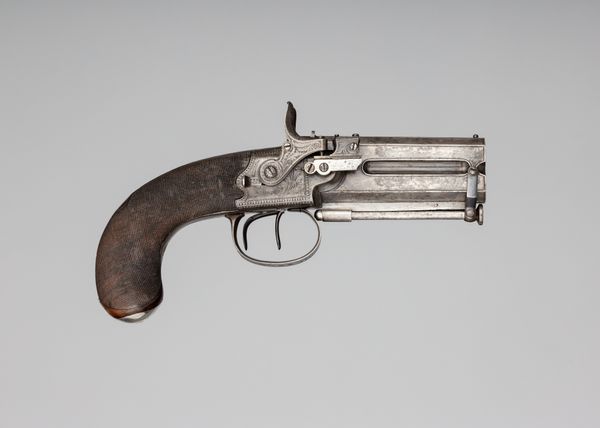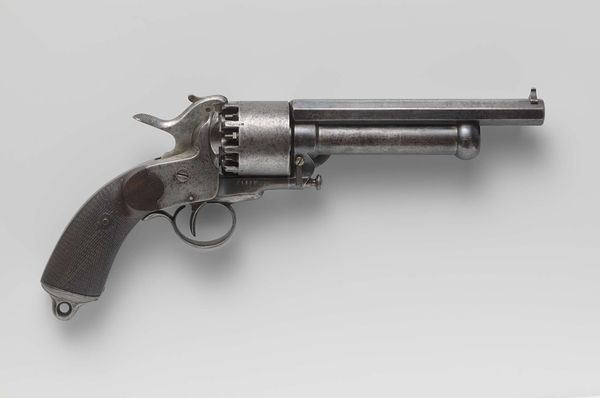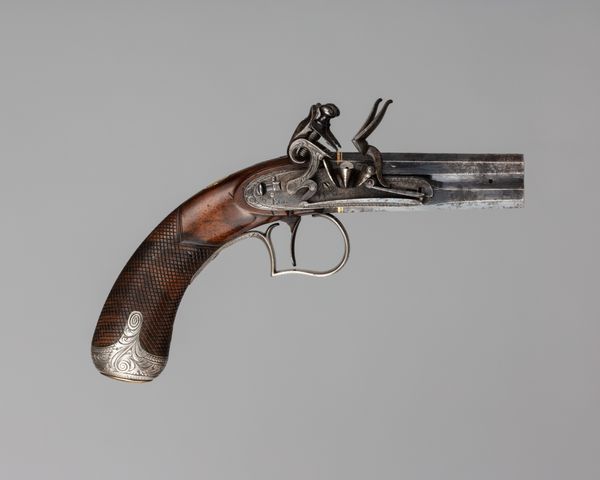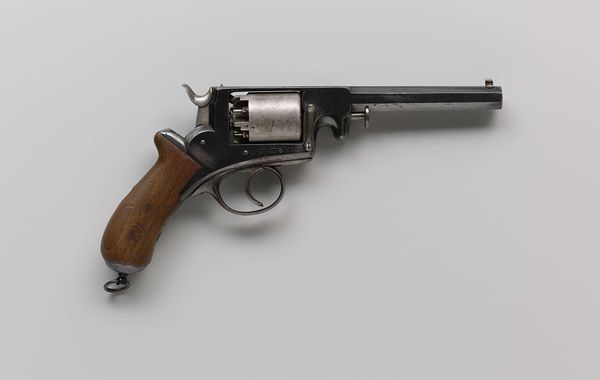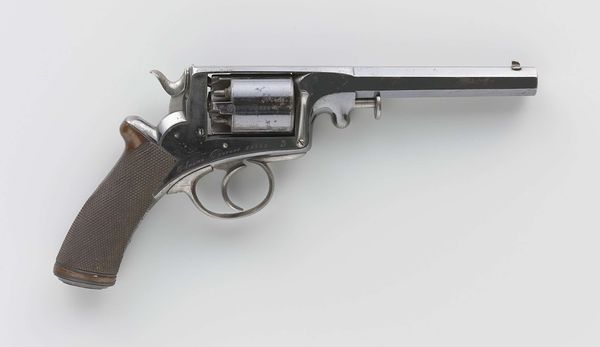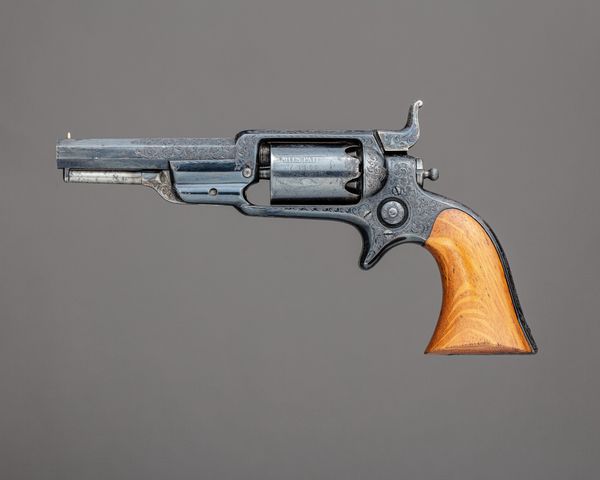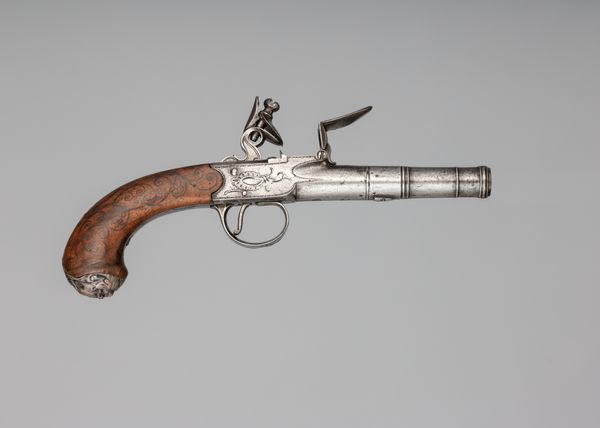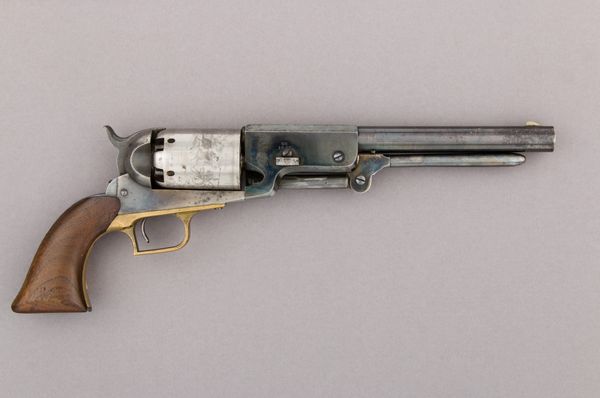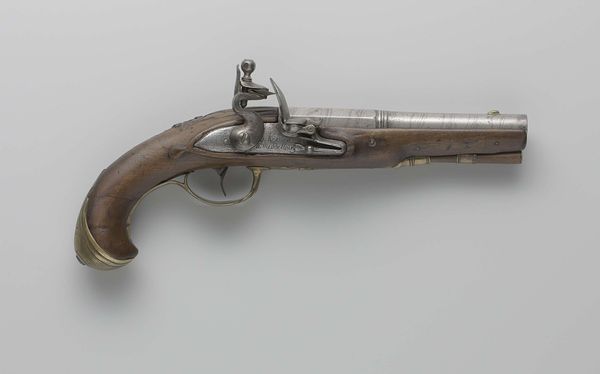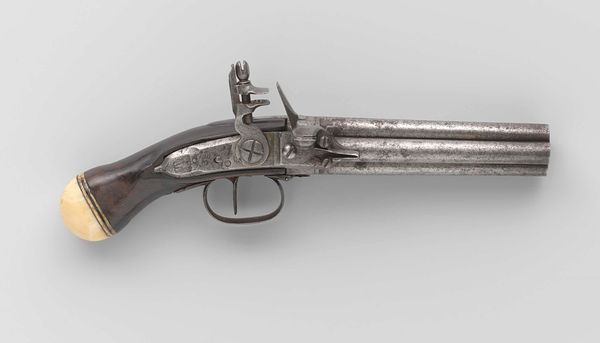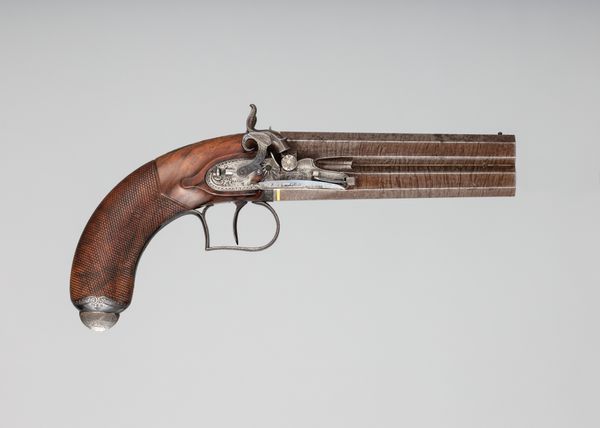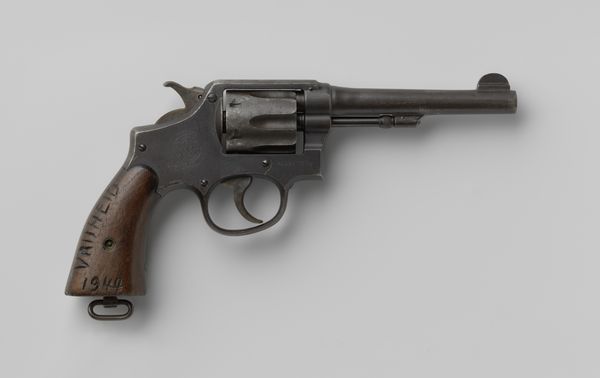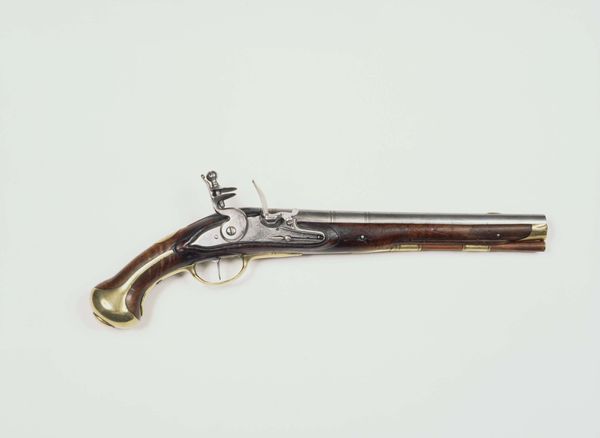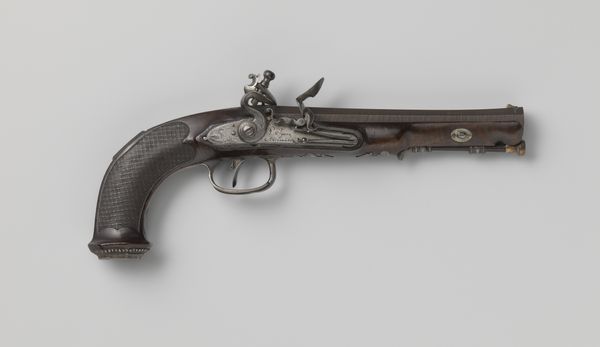
Six-Barreled Pepperbox Disk Primer Pistol with Case and Accessories 1820 - 1880
0:00
0:00
mixed-media, metal, sculpture, engraving
#
mixed-media
#
metal
#
sculpture
#
england
#
ancient-mediterranean
#
sculpture
#
engraving
Dimensions: Pistol (a); L. 8 in. (20.3 cm); L. of barrel 2 7/8 in. (7.3 cm); Cal. .35 in. (8.9 mm); Wt. 1 lb. 7 oz. (652 g); powder flask (b); H. 3 1/8 in. (7.9 cm); Wt. 3.4 oz. (96.4 g); ramrod (c); L. 4 1/4 in. (10.8 cm); Wt. 2.2 oz. (62.4 g); bullet mould (d); L. 4 7/16 in. (11.3 cm); Wt. 1.4 oz. (39.7 g); cylinder with contents (e); H. 1 5/8 in. (4.1 cm); Diam. 1 9/16 in. (4 cm); Wt. 2.8 oz. (79.4 g); case (f); H. 1 3/4 in. (4.5 cm); W. 10 1/8 in. (25.7 cm); D. 7 5/16 in. (18.6 cm); Wt. 1 lb. 2.4 oz. (521.6 g)
Copyright: Public Domain
This is a six-barreled pepperbox disk primer pistol with its case and accessories, created by Joseph Rock Cooper sometime in the mid-19th century. Consider the implications of an object like this during that period. Cooper lived during a time of significant social upheaval, marked by industrialization, class struggles, and the expansion of colonial power. Firearms were not merely tools but symbols of authority, protection, and control. How might the ownership of such a weapon intersect with issues of race, gender, and class? Who was afforded the right to bear arms, and what did that signify in a deeply unequal society? The pistol and its accessories—powder flask, ramrod, bullet mould, and case—speak to the rituals and practices of gun ownership. Were these tools of defense, instruments of oppression, or emblems of status? This piece invites us to reflect on the complex relationship between technology, power, and identity in 19th-century America.
Comments
No comments
Be the first to comment and join the conversation on the ultimate creative platform.
